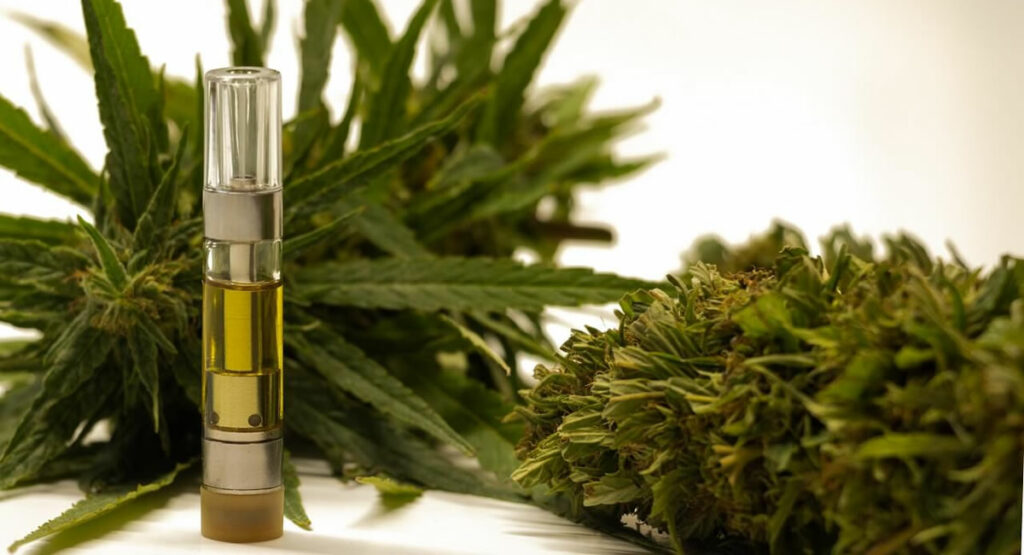While smoking remains one of the most common ways to consume cannabis, vaping has emerged as a healthier and more versatile alternative. Vaporizing avoids the carcinogens inherent in combustion while unlocking the full benefits of cannabis’ ingredients.
Let’s compare traditional cannabis smoking methods against modern vaporization to see why inhaling pure vapor wins out.
Examining the Health Risks of Conventional Cannabis Smoking
Typically, cannabis is smoked much like tobacco – by igniting dried buds in rolling papers, pipes, or bongs. In Europe, mixing cannabis and tobacco in “spliffs” remains widespread. However, smoking poses well-established problems.
The core health risks stem from inhaling thick smoke filled with carcinogens, tar, and toxins. When ignited, cannabis combusts at high heats alongside the paper or tobacco it’s combined with.
While this smoke contains some beneficial cannabinoids and terpenes, it also contains many of the exact same toxins present in cigarette smoke that damage lungs.
By holding in cannabis smoke longer than tobacco users, consumers also increase their tar exposure. According to multiple scientific studies, regular cannabis smoking is linked to:
- Chronic bronchitis from constant irritation and inflammation of lung airways
- Impaired immune function, leading to more frequent infections
- Excess mucus production, coughing, and wheezing
- Pulmonary inflammation and reduced lung capacity
- Elevated risk of lung conditions like emphysema
- Higher susceptibility to lung infections
Additionally, combustion destroys a significant percentage of the cannabinoids naturally present in cannabis through thermal degradation. So the full therapeutic effects and medicinal benefits are diminished when traditional smoking.
How Vaporization Avoids the Pitfalls of Smoking
Rather than burning cannabis to create smoke, vaporizers work by heating flower or oil extracts to precise temperatures optimal for inhalation without combustion.
At these cooler temps (365°F vs. 900°F from a flame), the active compounds like THC and CBD turn to pure, smooth vapor free of large particulates – not thick smoke laced with toxins.
Without these combustion byproducts, vaping poses substantially reduced health risks:
- Less long-term lung damage from frequent irritation
- Decreased respiratory issues like wheezing or sputum
- Fewer adverse pulmonary symptoms overall
- Lower exposure to tar that can coat lung tissue
- Avoidance of carcinogens released through burning
Research confirms vaping cannabis leads to notably fewer negative respiratory effects compared to prolonged smoking. For medical cannabis patients especially, vapor provides a much safer method to benefit from the plant’s natural therapeutic effects.
Studies also show vaping cannabis produces practically no lingering secondhand vapor. Since vapor lacks the high carcinogen levels of smoke, it poses fewer risks to those nearby. Vaping is inherently more socially acceptable.
Additional Advantages Vaping Offers Over Smoking
Aside from harm reduction, vaporizing cannabis provides other advantages compared to traditional smoking methods:
Precise Dosing – Vaporizers let users dial in exact temperature control, which impacts potency and effects. Many models also allow you to pre-set specific CBD/THC ratios for personalized, accurate doses.
Full Flavor – By avoiding combustion, more terpenes remain intact, providing fuller flavor directly from the cannabis rather than being masked by smoke.
Sustainability – With vaporization, far less cannabis matter is combusted away with each use compared to smoking. This conserves more cannabinoids and terpenes for efficient utilization rather than wasting them through burning.
Versatility – Vaporizers accommodate both loose, dry herb cannabis flower as well as concentrated cannabis oils or liquid extracts. This versatility suits a wide range of consumer preferences.
Discretion – Vaping produces significantly less visible vapor and odor compared to smoking. Vapor quickly dissipates rather than lingering like thick smoke. This allows for more discreet public use with less attention.
Finding the Best Vaporizer Options for Your Needs
If you’re convinced on making the switch to vapor but don’t know where to begin, two primary types of cannabis vaporizers exist:
Dry Herb Vaporizers: Designed solely for use with dried cannabis flower that must be ground first. Offer excellent flavor and efficiency. Top models include PAX and Arizer.
Oil Cartridge Vaporizers: Employ pre-filled cannabis oil cartridges simply attached to a compact battery. Super convenient but less cost-effective over time. Popular picks are the CCELL Palm and Vessel Vista.
No matter which style you choose, look for vaporizers made with quality materials like stainless steel or ceramic. Avoid cheap plastic components that can degrade with use. Reputable brands ensure performance and safety.
For patients seeking maximum therapeutic effects, opt for full spectrum cannabis extract cartridges. These contain a complete cannabinoid and terpene profile unlike some distillates that are stripped down.
The Verdict: Vaping Is the Healthier Cannabis Inhalation Method
When all factors are weighed, the evidence decisively favors vaporizing over combustible smoking methods for cannabis use, whether medically or recreationally.
By eliminating exposure to smoke and its toxic compounds, vaping cannabis provides a markedly safer inhalation alternative that unlocks more benefits of this therapeutic plant.
- Pennsylvania Mandates Vape Product Registry for Shops - December 24, 2025
- Kyrgyzstan Imposes Six-Month Ban on E-Cigarette Imports - December 24, 2025
- US Reclassifies Marijuana to Schedule III: Key Impacts - December 22, 2025


